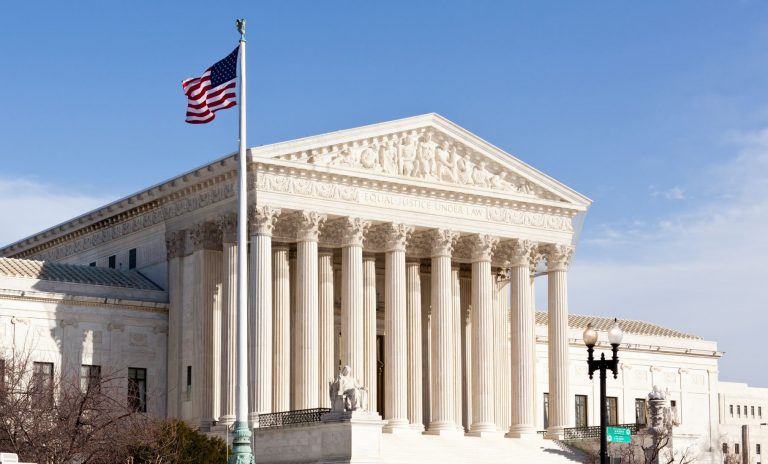Shifting Tides: Fifth Circuit’s New Dawn For Discrimination Claims
Shifting Tides: Fifth Circuit’s New Dawn For Discrimination Claims
This article was published on HR.com’s HR Legal Compliance & Excellence on December 4, 2023 and first appeared on the Bloomberg Law website.
The impact of the Fifth Circuit ruling on Title VII and what it could mean for the corporate landscape
Highlights:
- Regularly review and adapt policies and employee handbooks to align with evolving legal standards, ensuring proactive compliance with the changing legal landscape.
- Stay up to date on legal developments, especially within the Fifth Circuit, to understand the evolving nature of employment discrimination claims and potential shifts in employer liability.
- Employers should assess the significance of adverse employment actions that may be considered actionable under the new precedent, considering the expanded scope beyond ultimate employment decisions.
- Given the lack of clarity in the Fifth Circuit’s decision, seek legal guidance to navigate uncertainties and understand potential liabilities under Title VII. Consult with legal experts to ensure compliance and minimize litigation risks.
A federal appeals court has made it easier for plaintiffs to bring employment discrimination lawsuits but failed to offer clear guidance on how employers can adjust policies to minimize litigation risk.
The en banc decision from the U.S. Court of Appeals for the Fifth Circuit overturned decades of precedent requiring plaintiffs in employment discrimination lawsuits to prove the employer’s actions involved an “ultimate employment decision.”
Under the new precedent, plaintiffs need only to prove their employer’s actions involved in the “terms, conditions or privileges of employment.”
The Fifth Circuit covers Texas, Louisiana, and Mississippi. Employers that could be sued there should carefully evaluate whether their policies discriminate against certain employees, even inadvertently and in a non-ultimate employment decision. If policies need to change, employers should act quickly and communicate those changes to relevant personnel.
Title VII
The Fifth Circuit case, Hamilton v. Dallas County, was brought by a group of female detention service officers who asserted a Title VII claim against their employer for sex discrimination. They alleged that male officers were allowed to take full weekends off, but female officers only could take partial weekends or weekdays off.
While the county admitted it employed a sex-based policy to determine which days officers could take off from work, the district court dismissed the complaint. It found the discriminatory scheduling policy did not amount to an “ultimate employment decision” and concluded that Fifth Circuit precedent required the dismissal.
A Fifth Circuit panel found that the officers had alleged direct evidence of discrimination but said precedent required a ruling for the defense. However, the panel urged the full court to reexamine its holding “and harmonize [the Fifth Circuit’s] case law with [its] sister circuits’ to achieve fidelity to the text of Title VII.”
In its Aug. 18 en banc decision, the Fifth Circuit noted that “nowhere does Title VII say, explicitly or implicitly, that employment discrimination is lawful if limited to non-ultimate employment decisions.”
While Title VII prohibits discrimination in ultimate hiring decisions—such as hiring, refusing to hire, discharging, and compensation—it also makes it unlawful for an employer “otherwise to discriminate against” an employee “with respect to [her] terms, conditions or privileges of employment.”
The Fifth Circuit concluded that to plead a disparate-treatment claim under Title VII, a plaintiff must allege facts showing “adverse employment action, as opposed to an “ultimate employment decision.”
Applying the text of Title VII to the facts of Hamilton, the Fifth Circuit concluded that it had “little difficulty concluding” that the female officers “plausibly alleged discrimination” respective to their “terms, conditions or privileges of employment.’” The court reversed the district court’s judgment and remanded the case for further proceedings.
Employer Considerations
Hamilton highlights the need for U.S. employers to stay up to date on legal developments. In this one decision, the Fifth Circuit opened the door for claims that just one day earlier were not actionable. Reviewing policies and employee handbooks on a regular basis is a good first step to staying on top of the changing legal landscape.
The ruling expands the types of claims that employees can pursue within the Fifth Circuit. They are no longer required to plead an “ultimate employment decision,” such as hiring, granting leave, discharging, promoting, and compensating in order to pursue a Title VII complaint. Instead, actions that affect the employee’s “terms, conditions or privileges of employment” are also actionable.
Left unanswered, however, is how significant an adverse employment action must be to be actionable within the Fifth Circuit. The U.S. Supreme Court has held that Title VII is not a “general civility code for the American workplace.”
But the Fifth Circuit majority opinion fell short of providing guidance, much less bright-line rules, which will leave employers and employees to guess at what is and is not actionable under Title VII.
Several circuit judges issued concurrences that disagreed with the majority’s lack of clarity on this issue. Judge Edith Jones wrote that the decision “leaves the bench, bar and employers and employees with no clue as to what this court will finally declare to be the minimum standard for Title VII liability.”
Jones also wrote that the decision was akin to “hold[ing] that speeding is illegal” but failing to say “what speed is illegal under what circumstances.”
Employers are now left to guess what actions may or may not be actionable under Title VII in the Fifth Circuit. While precedent from other circuits may be helpful, uncertainty will nevertheless exist for the foreseeable future.
This article does not necessarily reflect the opinion of Bloomberg Industry Group, Inc., the publisher of Bloomberg Law and Bloomberg Tax, or its owners.
Reproduced with permission. Published Oct. 31, 2023. Copyright 2023 by Bloomberg Industry Group, Inc. (800-372-1033) http://www.bloombergindustry.com. For further use, please visit http://www.bna.com/copyright-permission-request/







